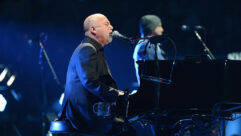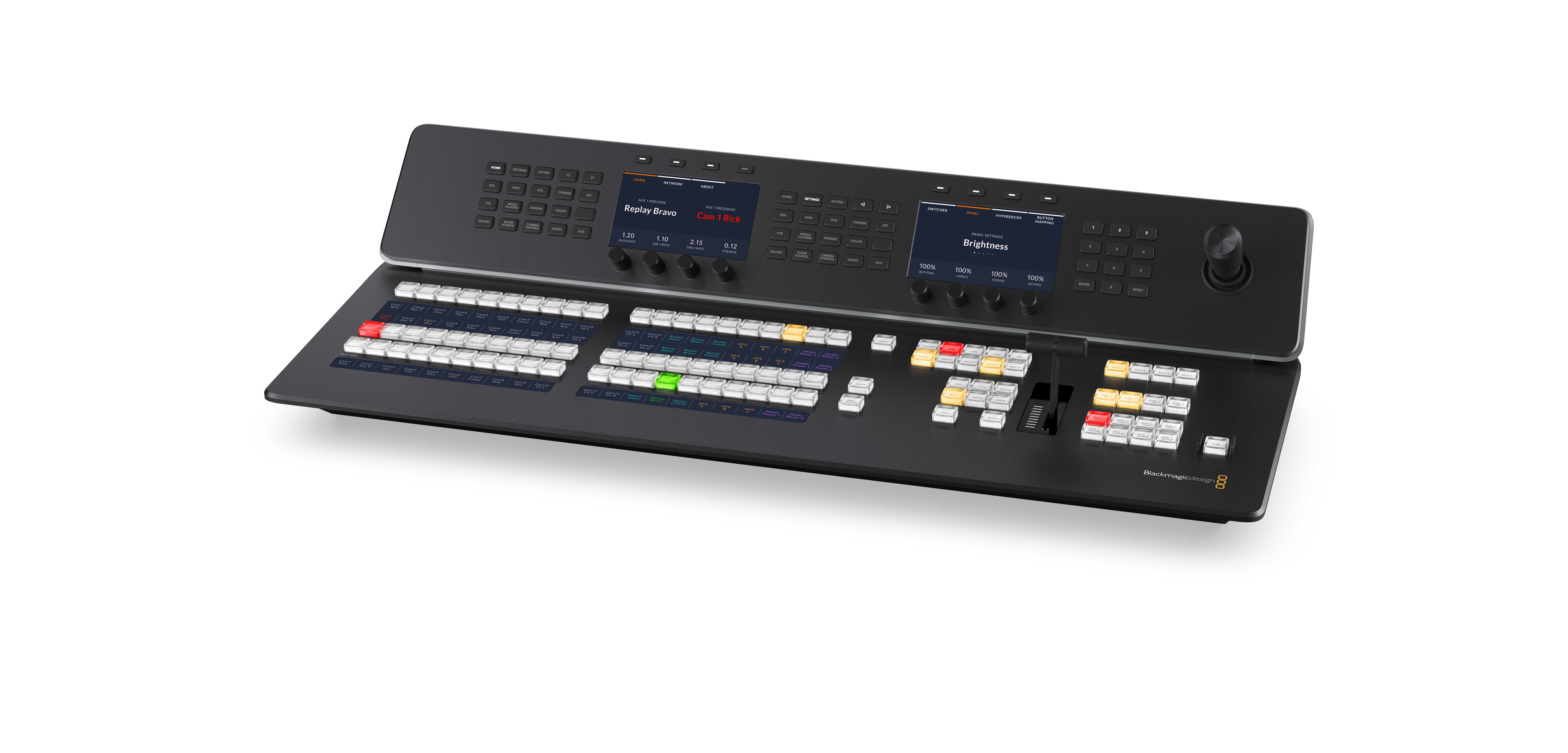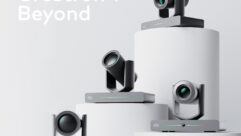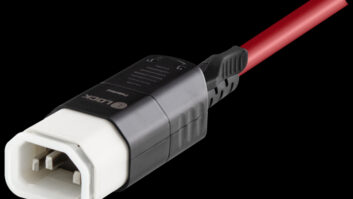
Stagetec Nexus at the NBA Finals, Part 1
Sep 27, 2011 11:01 AM,
With Bennett Liles
Listen to the Podcasts
|
Editor’s note: For your convenience, this transcription of the podcast includes timestamps. If you are listening to the podcast and reading its accompanying transcription, you can use the timestamps to jump to any part of the audio podcast by simply dragging the slider on the podcast to the time indicated in the transcription.
The American Airlines Arena in Dallas was packed for this year’s NBA Finals and it was Stagetec’s Nexus network carrying the broadcast signals to ESPN and all of the OB trucks in the arena compound. Stagetec president Russell Waite is here to give us the details on how Nexus works and how it was set up for the big NBA show. Coming up next on the SVC Podcast.
Rusty, thanks for being here for the SVC Podcast from Stagetec. Tell me a little about Stagetec. I know the company is doing a lot of things over here now and it isn’t the first time we’ve had Stagetec featured. We did a talk on the opera, Aida on the Rhine in Switzerland a while back using Stagetec gear and networking, but tell me about the company.
Stagetec was formed in ’93. It’s based out of Berlin, Germany. It’s actually formed from a bunch of engineers that actually originated at Neumann and then joined with a team from Salzbrenner and hence, the Salzbrenner Stagetec media group. And in ’93 first launched with the digital audio routing platform, the Nexus, which is what we’re talking about today. We’ll get into a little bit more of the specifics in a while. Over the beginning years for Stagetec focus was mainly within Germany and then from there they grew into Europe wide and I would say in the past decade have definitely been concentrating on expanding into other markets such as Asia, India, and also now here in the US and to bring the message out and to build on the success in Germany and in Europe. At Stagetec we build digital audio routers—that was really how it started and that’s the Nexus system. That’s our flagship product and from there we built control consoles that hook up with the Nexus…so digital audio consoles and that started with the Cantus line back in ’94-95 and then moved up to the RS Crescendo which is what we currently have in our product line up. [Timestamp: 2:26]
And you got a real road test of the networking setup this summer at the NBA finals, not exactly a low profile event, to test the Nexus network. And that was broadcast from the American Airlines Arena in Dallas?
Yeah, that was a mix between Dallas and Miami so we actually had setups in both cities for the games and I was actually physically in Dallas and running the systems. It’s interesting, not a lot of people know that we’ve actually had a Nexus system at ESPN, both in Bristol and in L.A., in fact their whole facility is networked together through Nexus so all the audio in the plants goes through the Nexus system. And what’s interesting with the NBA Finals and what I’ve been actually working on the last two to three years is the remote sports broadcast and the Nexus I find is, being fiber-based and having the modularity that it does, is really a product suited for the mobile industry and I think being part of the NBA finals is really something that was great for us and it really brought it up and proved to be a very reliable system and a great sounding system and I thinks that some of the feedback that we got and took away from the event. It’s just generally very great to part of it all and to show people how to connect systems together such as a Nexus and that can really alleviate on the work load that some of these guys have when they get to these shows. [Timestamp: 3:54]
Probably the most brutal environment for hardware and crew people is in doing sports remotes and there was a lot of Stagetec hardware at the site. And bringing the audio sources to the network were the TrueMatch mic preamps.
Yeah, it’s interesting you say…the network, when we talk about it, is quite vast. So on a remote sports program obviously you have the event and you need to bring whatever signals where…let’s take basketball for instance, you have to bring the court mics, the crowd mics, the announcers mics which were all going through the Nexus TrueMatch and then back—you bring that then back to the compound where all the trucks are located and then in an event such as the NBA Finals you have several broadcasters there so you have to be feeding to multiple different providers, really, so we not only do the networking on the courtside and bringing all those sources to the end but then we can network the sub mix and also all the raw data to all the different trucks throughout the compound and I think that’s where the Nexus through its distributed architecture really excels and again, as I’ve said before, facilitates the job of the A2 not having to roll out all the multi-core cable and actually makes life a lot easier with fiber. Fiber is really lightweight—there is no need to bring another truck porting just all the heavy multi-core cable from city to city. [Timestamp: 5:19]
And probably all of the potential ground loops and induction and RF interference you don’t have to worry about.
Obviously there’s no interference from power…as you were saying, ground loops—none of that¬–when you’re using fiber it’s great and we even use CWDM technology which enables us to put both the transmit and the receive fibers sends into one strand. So that’s great when you’ve got a bunch of TAC-12s or TAC-4s lying around and you want to share it with video. So we take one fiber strand for the main and one for the redundant feeds. When you look at these remote sports events and the reasons that they get out there so early because there’s just so many signals having to go to so many different places and you really need to be on top on how all of this stuff is patched together. [Timestamp: 6:1]
Stagetec Nexus at the NBA Finals, Part 1
Sep 27, 2011 11:01 AM,
With Bennett Liles
Yeah, I saw some pictures of it and you really had your own little broadcast truck city back there right next to the arena.
Yeah, yeah and that’s quite normal for over here. That’s how they do it—multiple trucks and alone the amount of sources that are coming through for the sub mix. You’re mixing 60, 80 sources and then you’re distributing it to the studio program, you’re distributing it to the main production truck, the D truck, to NBA TV, international feeds—it’s quite vast what’s going on. [Timestamp: 6:42]
So the TrueMatch preamps, how are those operated remotely? What kind of an interface do you have? Can you describe the Nexus GUI for me?
Oh, glad you brought me back to the TrueMatch because we jumped over that. TrueMatch is really integral to the whole Nexus design. It’s a patented technology that we have, so in fact it’s a digital mic pre. We have complete control from the microphones from either from the console or from the Nexus GUI that runs on any PC–Windows platform–and from there you get a visual display either on a matrix type for setting up your cross points—what needs to be routed where, but you also get full parameter view so you can actually go in and you have a graphical fader that you can up the pre-amp value to maximize the head room of the system. The TrueMatch, really, its claim to fame is it’s 158dBA of dynamic range and you’re really at that point just down to the limitations of what the microphone can pass and it’s the truest representation of the actual microphone and that’s why we call it TrueMatch. And you don’t need to be doing this in the court or anywhere with a base device or our nodes where the microphones connected to—you do this on the truck. And when you have multiple channels, as I was saying before, from a sub mix…so let’s say all of the court microphones, crowd microphones, everything that’s coming in—you can have multi-channel meters set up so you can see for confidence right in one go what’s being sent to the truck and what you’re getting so if there are any issues you have a reference right then and there and it’s not just a little LED lamp that some of the other systems that are available have you have a true long-throw meter that you can set up and it’s customizable for each operator. You can have multiple GUI’s set up. In fact, TrueMatch—we didn’t use this at the NBA–but you can automatically split those and you can have four splits running off of one microphone input and with independent gain structure. And that’s something in a FOH which sometimes happens if we had a FOH…if we were using Nexus for the FOH and for the broadcast you would definitely want to have a separate gain structure set up. [Timestamp: 9:02]
So how is the American Airlines Arena for doing broadcast out of? Any particular obstacles or how broadcast friendly is it?
This is the second event we did there. We did the NBA All-Star game back in 2010 and I got to say being a new…a newer arena, it’s got a lot of fiber laid out in there so connectivity was quite easy and that again goes back to what we’re trying to do and the message that we’re trying to get out there is “Listen, we really do need to move off of copper and we owe it to ourselves to move onto another platform and fiber is a great transport medium.” As you said before, there’s no interference that we need to worry about. It really makes…facilitates the installation and it’s great when you take one of these boxes that’s got it in a nice rack unit or whatever and you bring it out to where you need it, just place it down and then you just plug the fiber in and then voila the unit says, “Hello, I’m here!” and whatever you need to do, we can do. [Timestamp: 10]
How much of the fiber cable did you have to provide yourself? Was most of it already in place?
All of the fiber stuff within…going from the court back to the compound that was supplied by ESPN and a little bit of American Airlines Center. They have that stuff on hand. Actually within the compound just to speed things up we just fibered up all the boxes together so we did this together with CP Communications and they’ve been our partners for a while now in the remote sports broadcast and they’re a rental house based out of New York and so they brought a bunch of fiber limbs with them—some TAC-4, some TAC-12–and just in the compound we connected up the base devices within a matter of minutes and everybody was just like, “What, you’re all connected?” “Yep, we’re all ready to go.” So, I make it sound easy, obviously there’s a lot of planning in terms of what the guys—the A1s–need to do before a show happens and they got to know what points and what sources are needed where and where are they feeding what signals to. But that’s something that we only get involved with broad scale. We’re not down into the micromanaging of that. That’s up to the end user. We just provide the inter-connects and make it easy for them and we just follow as…what they need—“We need a base device here on the sub mix trailer. We need a couple over here by the production mix. We need one by 3D.” It’s something that we pride ourselves on is providing equipment that’s very, very reliable. You plug it in and you get going…the case in point, back to the TrueMatch it’s funny, I can’t mention any names but one of the A1’s there are saying, “These high-end mic pre’s are really going to catch on.” because they are just blown away by the sound. [Timestamp: 11:45]
Now how many sorts of different signals can you simultaneously route over the Nexus network?
It’s interesting, it’s really…from an audio standpoint we’ve handled all flavors from MADI to AES, analog obviously as we’ve been speaking. We do embedding, de-embedding for 3G, we do Dolby E, Tdif, Adat…there’s a whole slew of them but not only do we transport audio we also transport communications so whether it be GPIO, RS-422, -232, 485 even—we can take your RTS panels and if you want to remote those you can just plug it into an Nexus base device, throw a 485 out at the other end and you’ve got the panel working there at the other end. [Timestamp: 12:33]
What are the Nexus Base Devices and how do they work? They’re obviously a very critical part of this system.
Yeah, as I said in the beginning, Nexus is a distributor of architecture-styled routing which means we have what we call base devices those are actually nodes and those are connected together by a fiber and in each of those nodes we have modular choices for you to make on types of I/O that you need so whatever you need at that location. So for instance if you had a bunch of…in NBA-style obviously within the facility you would have a whole slew of the TrueMatch microphone inputs on various different boxes wherever you needed them—if you needed it down by the net. We have small 1RU, 19in. 1RU boxes that these cards slip in or we have the next size up is a 3RU that can hold up to 20 cards and you populate it as you need it. You need outputs—OK no problem, you need AES inputs, yeah, we’ll work that out with you and then smaller networks it’s all set up in a ring topology type way and then obviously as soon as you start getting a little bit bigger—over 256 channels we go to STAR and a mix of rings so you can get quite large. In fact the ESPN system facility wise, you’re looking at over some 65,000 inputs and outputs so the Nexus can grow with you. Obviously in a remote situation you’re not going to have that many inputs and outputs…I think at the NBA Finals we were, with all the MADI signals, I guess we were somewhere in the vicinity of…let me just check here quickly, I would say probably somewhere in just over 1,000 channels that we were porting around. [Timestamp: 14:18]
Well, that’s plenty for a live remote and I really appreciate your taking time to tell us about how all of this got done at the NBA Finals. In part 2, we’ll get more into the TrueMatch digital mic pres and some of the other things that happened on the remote but thanks for telling us about it.










